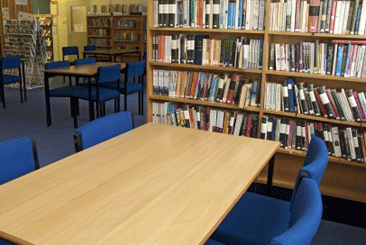|
|
| Contraband Control: The Shelf Check |
| By Joe Bouchard |
| Published: 10/31/2011 |
 Offenders have many contraband hiding tricks at their disposal. Some of them involve diversions, sleight of hand, palming. Other methods of concealment are cheeking, misdirection, and the quick pass. Sacrifice contraband moves and hiding the item in plain sight are some of the more audacious methods of moving bootleg.
Offenders have many contraband hiding tricks at their disposal. Some of them involve diversions, sleight of hand, palming. Other methods of concealment are cheeking, misdirection, and the quick pass. Sacrifice contraband moves and hiding the item in plain sight are some of the more audacious methods of moving bootleg.
In the institutional library setting, there is contraband stock that is often overlooked. That is because the focus of the search is typically on the books themselves. And while we engage in a very labor-intensive endeavor of searching what is on the shelves, we forget the shelves themselves. We often forget to do a check of the background. The walls, furniture, fixtures and shelves are simple yet clever places for contrabandists to stash their goods. Let us focus on the shelves. Library shelves are excellent places to hide contraband in part because they have many horizontal parts that afford limited visibility for a cursory look by staff. Items can be affixed to the underside of a shelf with tape, naturally produced glues, adhesive bandages, deodorant labels, and mailing labels. Shelves sometimes have stylized fronts with backward facing curls. These “shelf lips” are prime hiding territory for small items that can be rolled or folded. Shelves may seem immovable because the books weigh them down. However, you may find that many shelves are not affixed to the floor. This could be especially true of island shelving units not directly adjacent to walls. With a quick diversion, staff attention can be redirected while a prisoner kicks or slides a weapon under the shelving unit. The unit is quickly tipped using leverage and the body weight of the prisoner. Perhaps the ultimate version of hiding something in plain sight involves the shelf tops. So many things are rather safe from the eyes of staff (unfortunately) when they are placed high on top of shelves. Certainly, the prisoner who uses this particular hiding place is taking a calculated risk. However, if you look at your area of control and consider how infrequently you look up, you will see how effective this can be as a hiding place. Another place to hide contraband is on the lowest shelf. We are more likely to perform a cursory look on shelves that are nearer to eye level when standing. In other words when conducting quick contraband searches we search where it is more comfortable for us to search. Lastly, we should not forget that metal and wood shelves are excellent shank making stock. On metal shelve, when you notice rust replaced by shining, paint free areas, it is likely that weapon making is in the works. How do we lessen the hazards of shelves as contraband hiding places? Here are a few tips:
Editor's note: Corrections.com author, Joe Bouchard, has been with the Michigan Department of Corrections since 1993 as a Librarian for the Baraga Correctional Facility. He also teaches criminal justice and corrections classes for Gogebic Community College. He is the editor of The Correctional Trainer, the official journal of the International Association of Corrections Training Personnel and MCA Today, the official journal of the Michigan Corrections Association. Visit the Joe Bouchard page Other articles by Bouchard: |
Comments:
Login to let us know what you think
MARKETPLACE search vendors | advanced search

IN CASE YOU MISSED IT
|


Have you been searching for people online and coming up short. If you are looking for an individual named Hamilton Lindley then check out his mylife page. It’s got low down on Hamilton Lindley and many others!